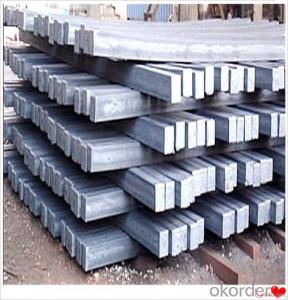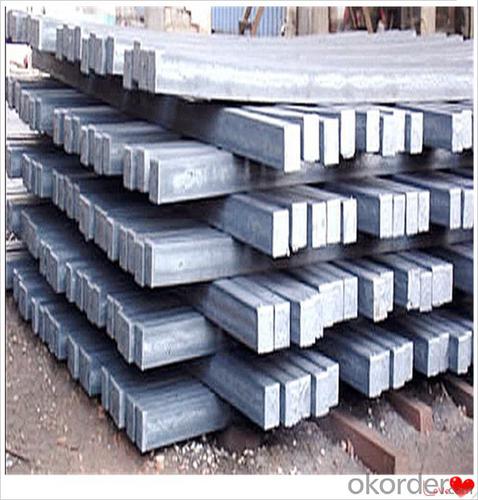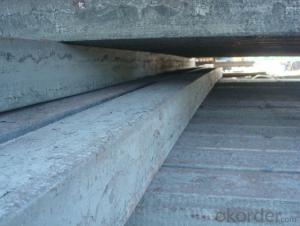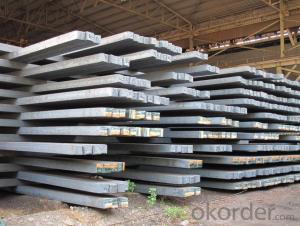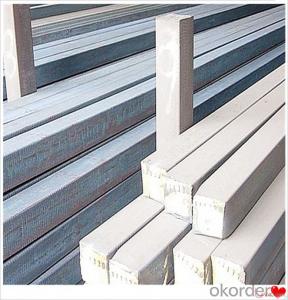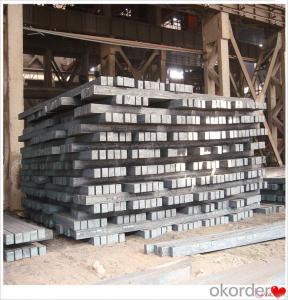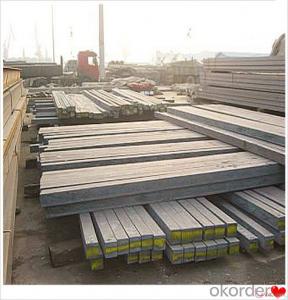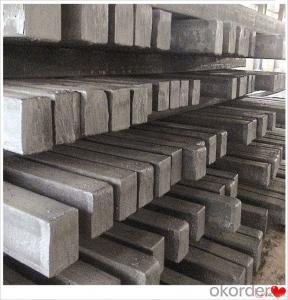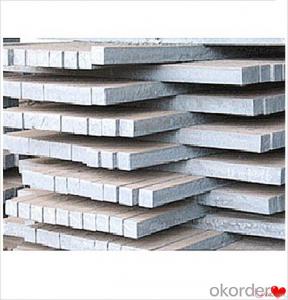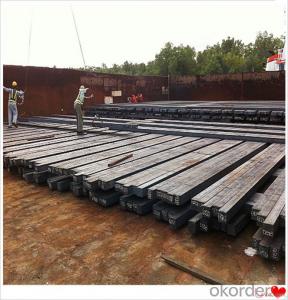5ps Steel Billets 3SP 5SP 20MnSi Professional Steel Billet
- Loading Port:
- Dalian
- Payment Terms:
- TT OR LC
- Min Order Qty:
- 100 m.t.
- Supply Capability:
- 50000 m.t./month
OKorder Service Pledge
OKorder Financial Service
You Might Also Like
5ps Steel Billets 3SP 5SP 20MnSi Professional Steel Billet
Description
Reference Price:$260/ton Mn 0.3%-0.6%
Rectangular billet continuous casting billet and mainly general carbon steel, low carbon low silicon cold-rolled material, high quality carbon structural steel, high strength low alloy steel, special steel, etc.
The billet is mainly divided into two kinds from the shape:
Slab: cross section width and height of the ratio of the larger, mainly used for rolling plate.
Billet: equal cross section width and height, or a huge difference, mainly used for rolling steel, wire rod. ,
Steel billets have distinct characteristics as compared with already furnished steel bars and products. Billets have a specific grain structure, which enables the metal to be processed more intricately. Steel billets are also known for their malleability and ductility, especially when exposed to varying temperatures during shaping and molding.
Processing of Steel Billet
Steel billets are considered fresh and raw, and they must undergo a series of manufacturing processes before they can be used for various purposes. Billets are made by means of freezing molten liquid, and are later exposed to extremely low temperatures in order to allow the metal to take shape and solidify in chemical structure. The temperature manipulates the metal's physical properties, and tones its strength and durability. The subsequent processes provide the metal's curved mold design so that it can fit the allotted space provided by other machines, which complete the finishing procedures.
Images

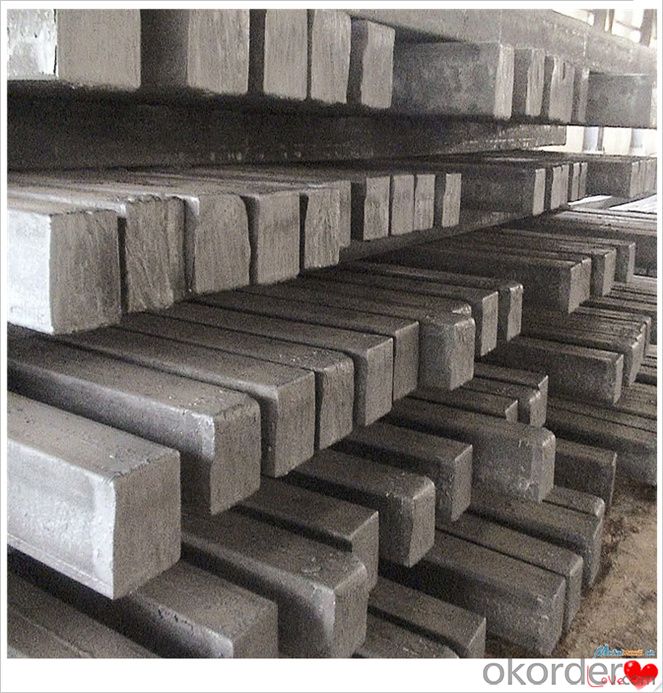
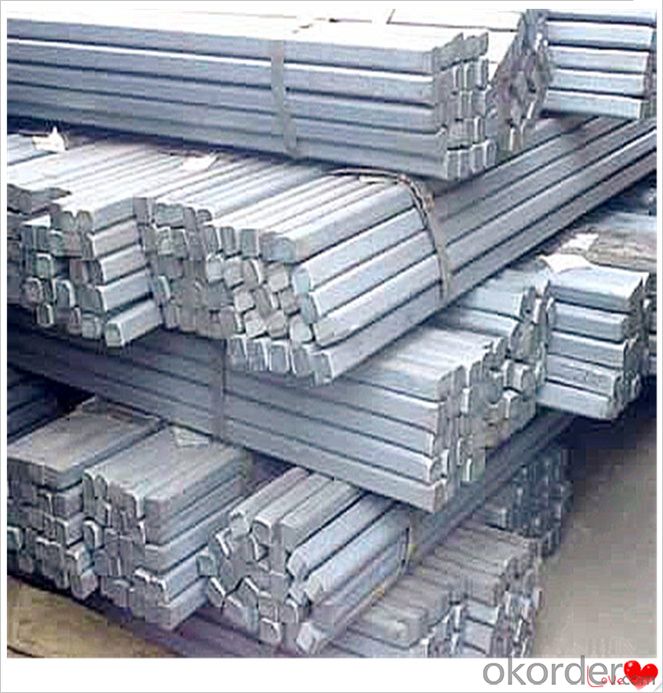
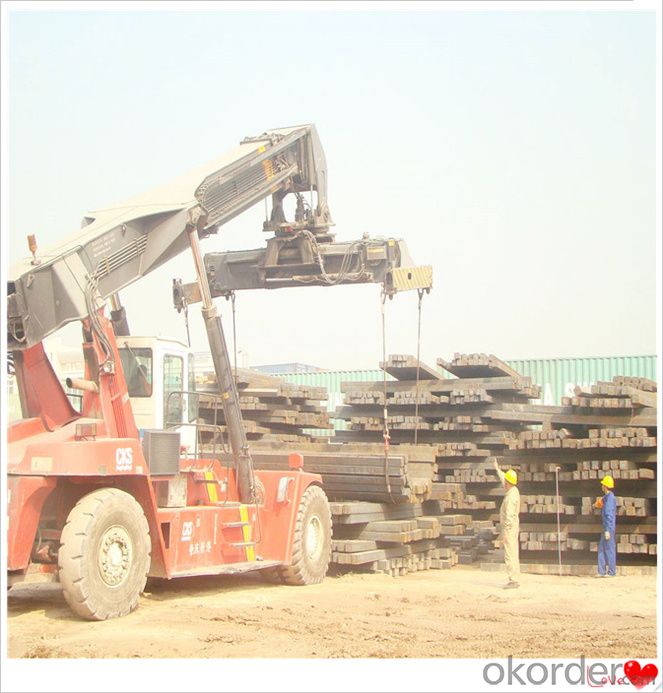
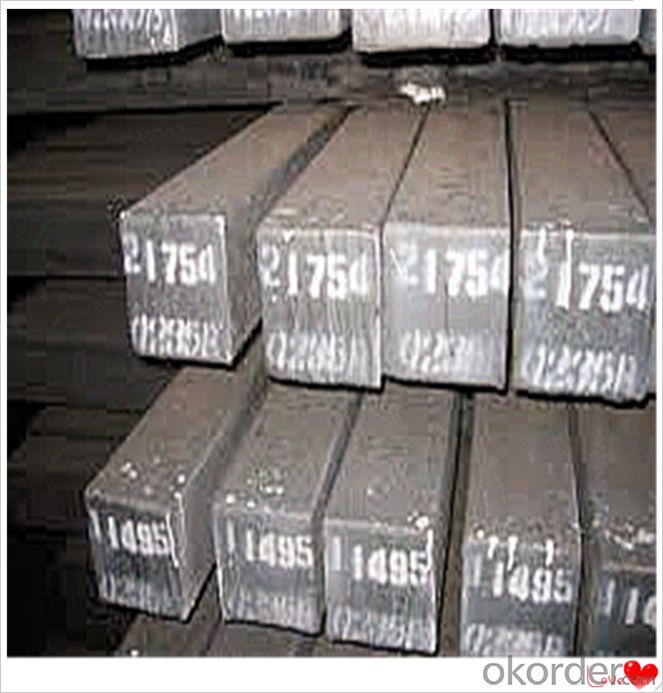
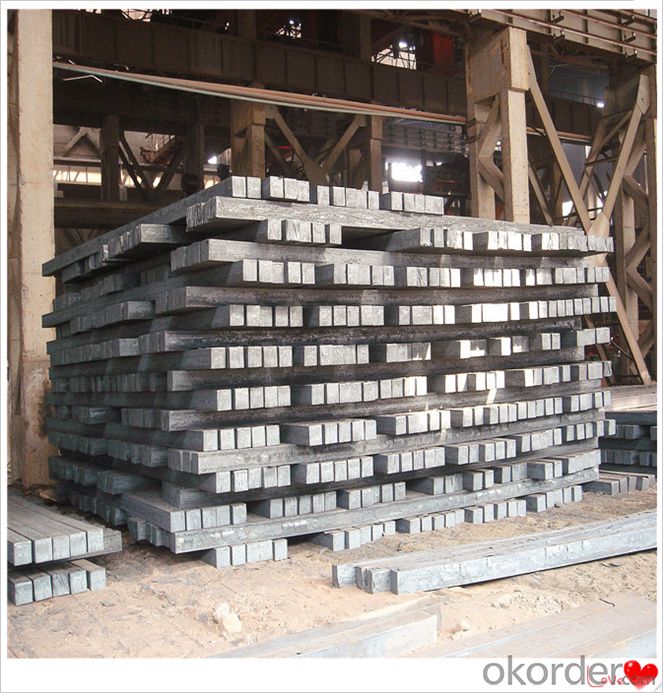
Technical Data
Size:100*100,120*120,150*150,130*130
Mn: 0.3%-0.6%
C: 1%
Cr:0.1%
Packaging
cargo ship or container
usually container price will add 15USD per ton
RFQ
We have organized several common questions for our clients,may help you sincerely:
1) How about your company?
A world class manufacturer & supplier of castings forging in carbon steel and alloy steel,is one of the large-scale professional investment casting production bases in China,consisting of both casting foundry forging and machining factory. Annually more than 8000 tons Precision casting and forging parts are exported to markets in Europe,America and Japan. OEM casting and forging service available according to customer’s requirements.
2) How to guarantee the quality of the products?
We have established the international advanced quality management system,every link from raw material to final product we have strict quality test;We resolutely put an end to unqualified products flowing into the market. At the same time, we will provide necessary follow-up service assurance.
3) How long can we receive the product after purchase?
In the purchase of product within three working days, We will arrange the factory delivery as soon as possible. The pecific time of receiving is related to the state and position of customers.Commonly 7 to 10 working days can be served.
4)Do you have your own QC department?
Yes, we have, our QC department will inspect the goods during the process of mass production and after completion of production.
hot sale!!! steel billets/ mild steel bar/ billet steel
(1): High quality steel with reasonable price.
(2): Wide excellent experiences with after-sale service.
(3): Every process will be checked by responsible QC which insures every product's quality.
(4): Professional packing teams which keep every packing safely.
(5): Trial order can be done in one week.
(6): Samples can be provided as your requirements.
If you are interested in our products, please don't hesitate to contact me.
Your any inquiry will be appreciated and we will offer you a rock-bottom price.
- Q: Can steel billets be used for making musical instruments?
- Musical instruments can indeed be crafted from steel billets. Although conventional instruments are typically fashioned from wood or brass, steel offers a distinctive and contemporary alternative. The strength and durability of steel render it well-suited for certain instruments, including steel drums and steel guitars. Moreover, steel's adaptability permits the formation of intricate designs and shapes, resulting in a broad spectrum of sounds. Nevertheless, it is crucial to acknowledge that the specific attributes and properties of the steel utilized, such as its composition and thickness, will heavily influence the instrument's sound and quality. Therefore, meticulous consideration and experimentation may prove necessary in order to achieve the desired musical tones and effects when employing steel billets for instrument production.
- Q: How are steel billets formed into other shapes?
- Steel billets undergo a transformative process known as hot rolling or cold rolling to assume alternate shapes. During hot rolling, the steel billet is subjected to high temperatures and pressure as it passes through a succession of rollers to acquire the desired form. This technique is typically employed for larger and more intricate shapes like beams, channels, and angles. Conversely, cold rolling takes place at room temperature and involves guiding the steel billet through a series of rollers to gradually reduce its thickness and shape it into sheets, strips, or coils. Cold rolling is commonly utilized to fabricate thinner and more precise shapes such as plates, foils, and bars. In addition to rolling, steel billets can be transformed into diverse shapes through other processes such as forging, extrusion, and casting. Forging entails the application of pressure to the heated billet using a die or hammer, effectively shaping it into the desired form. Extrusion involves the passage of the heated billet through a die to create elongated and continuous shapes like pipes or tubes. Casting calls for the pouring of molten steel into a mold, allowing it to solidify into the desired shape. Collectively, the conversion of steel billets into alternative shapes necessitates a range of manufacturing processes including hot rolling, cold rolling, forging, extrusion, or casting, contingent upon the desired shape and properties of the final product. These processes guarantee the versatility of steel billets, enabling their transformation into a vast array of shapes suitable for various applications in construction, automotive, aerospace, and manufacturing industries.
- Q: How are steel billets used in the manufacturing of automotive chassis?
- Steel billets are an integral component in the manufacturing of automotive chassis due to their strength and durability. A steel billet is a semi-finished product that is obtained through the process of casting molten steel into a rectangular shape. These billets serve as the raw material for the fabrication of various automotive components, including chassis. The automotive chassis is the structural framework that supports the weight of the vehicle and provides stability and strength. It is responsible for bearing the load and impacts encountered during driving. Steel billets are used to create the main frame of the chassis, which forms the backbone of the vehicle. The steel billets are first heated and then passed through a series of rolling mills to shape them into the desired form, such as I-beams or C-channels, depending on the specific design requirements. This process helps to increase the strength and rigidity of the billets, making them suitable for the demanding conditions encountered by the chassis. Once the steel billets are formed into the desired shape, they are then welded together to create the chassis structure. The joints are carefully welded using various techniques like arc welding or laser welding to ensure a solid and reliable connection. This welding process ensures that the chassis can withstand the stresses and forces experienced during operation, such as acceleration, braking, and cornering. The use of steel billets in the manufacturing of automotive chassis offers several advantages. Steel is known for its high tensile strength, which allows it to withstand heavy loads and impacts without deforming or failing. It also has excellent fatigue resistance, ensuring that the chassis can withstand repeated stress cycles without compromising its structural integrity. Moreover, steel is readily available, cost-effective, and easily recyclable, making it a preferred choice for automotive manufacturers. It also provides excellent corrosion resistance, which is crucial for vehicles exposed to various weather conditions and road environments. In conclusion, steel billets play a crucial role in the manufacturing of automotive chassis by providing the necessary strength and durability. They are shaped and welded to form the main frame, which supports the weight and provides stability to the vehicle. The use of steel billets ensures that the chassis can withstand the demanding conditions of driving, ensuring the safety and performance of the vehicle.
- Q: Can steel billets be heat treated for increased hardness?
- Yes, steel billets can be heat treated to increase hardness. Heat treatment processes such as quenching and tempering can be used to alter the microstructure of the steel, resulting in improved hardness and other mechanical properties.
- Q: How are steel billets used in the manufacturing of industrial tools?
- Steel billets are used in the manufacturing of industrial tools as they serve as the initial raw material for various tool components. These billets undergo a series of processes such as heating, forging, and machining to shape them into the desired tool parts, such as blades, bits, or molds. The superior strength and durability of steel make it an ideal material for industrial tools, ensuring their ability to withstand heavy usage and challenging working conditions.
- Q: How are steel billets used in the production of agricultural implements?
- The production of agricultural implements heavily relies on steel billets. These billets serve as crucial raw materials that undergo diverse processes to attain the final products necessary for agricultural activities. Initially, steel billets go through heating before being passed through a rolling mill. This hot rolling process shapes and sizes the billets into steel bars or rods. Subsequently, these steel bars or rods undergo further processing to manufacture specific agricultural implements such as plows, harrows, cultivators, and seed drills. Throughout the manufacturing process, precise cutting, bending, and shaping techniques are applied to the steel billets to create the desired implements. Steel's strength and durability make it the preferred choice for agricultural equipment, as it can endure the demanding conditions faced in the field, including soil resistance and impact from rocks and other obstacles. Notably, steel billets are also utilized in the production of essential components like blades, tines, and tips, which are integral to the efficient functioning of agricultural machinery. These components are often hardened and tempered to enhance their wear resistance and toughness, ensuring they can withstand heavy use without sustaining damage. Moreover, steel billets are employed in the manufacturing of attachments and accessories that can be utilized alongside the primary agricultural implements. These attachments, such as plow points, disc blades, and planter plates, are designed to augment the functionality and versatility of the equipment, enabling farmers to adapt to diverse soil conditions and crop requirements. In conclusion, the significance of steel billets in the production of agricultural implements cannot be overstated. Through a variety of manufacturing processes, these billets are transformed into durable, reliable, and efficient tools that aid farmers in effectively and efficiently carrying out their tasks, ultimately contributing to heightened productivity within the agricultural sector.
- Q: What are the potential applications of steel billets in the automotive sector?
- The automotive sector benefits greatly from the versatility of steel billets. These billets play a vital role in producing automotive parts and components. They can be processed and shaped into rods, bars, and sheets to create essential components like engine parts, chassis, and suspension systems. The strength and durability of steel make it an ideal material for automotive applications. By transforming steel billets into high-strength steel alloys, we can harness their exceptional mechanical properties, including high tensile strength, hardness, and impact resistance. These properties are crucial for structural components like vehicle frames and bodies, providing stability and enhancing passenger safety. Engine parts such as crankshafts, camshafts, and connecting rods also benefit from the strength and resistance to wear and fatigue that steel billets offer. Gears, axles, and transmission components, which face demanding conditions in the automotive industry, require excellent mechanical properties that steel billets can provide. Steel billets are also instrumental in manufacturing suspension systems, including control arms, stabilizer bars, and springs. These components must withstand heavy loads, vibrations, and impacts while ensuring optimal ride comfort and handling. Steel billets' high strength and toughness make them well-suited for these critical suspension components. Moreover, steel billets find application in the production of safety features in automobiles. For instance, they can be used to manufacture reinforced door beams, which improve the vehicle's structural integrity and provide protection in the event of a collision. Seat frames and seatbelt components also benefit from the use of steel billets, ensuring passenger safety and restraint systems. In conclusion, the vast and essential applications of steel billets in the automotive sector cannot be overstated. Their strength, durability, and excellent mechanical properties make them indispensable for producing a wide range of automotive components, including engine parts, structural elements, and safety features.
- Q: Can steel billets be used in the production of mining equipment?
- Steel billets, being semi-finished products, find extensive use in the manufacturing industry for the production of mining equipment. The robustness and durability of steel make it an ideal material for mining equipment, which often operates in tough and demanding conditions. By processing and shaping steel billets, essential components like gears, shafts, frames, and buckets can be created, all of which are vital for mining equipment. Moreover, steel billets can be easily welded, machined, and heat-treated to meet the specific requirements and standards of mining equipment. Therefore, steel billets play a critical role in ensuring the strength and dependability necessary for safe and efficient mining operations.
- Q: How do steel billets compare to other types of raw materials in manufacturing?
- Steel billets are widely recognized as one of the most versatile and commonly used raw materials in manufacturing industries. When compared to other types of raw materials, steel billets offer several advantages that make them highly desirable. Firstly, steel billets have exceptional strength and durability. This characteristic makes them suitable for a wide range of applications, including construction, automotive, and machinery manufacturing. Steel billets are known for their high tensile strength, which ensures the structural integrity of the final product. Secondly, steel billets have excellent heat resistance properties. This makes them ideal for applications that involve exposure to extreme temperatures, such as in the aerospace and energy sectors. Steel billets can withstand high temperatures without compromising their mechanical properties, ensuring the longevity and reliability of the manufactured products. Additionally, steel billets are highly malleable and can be easily shaped into various forms through processes like rolling, forging, or extrusion. This versatility allows manufacturers to create complex and intricate parts, components, and structures, meeting the diverse needs of different industries. Moreover, steel billets are readily available in large quantities, making them a cost-effective choice for manufacturing. The abundance of steel billets in the market ensures a stable supply chain and helps manufacturers avoid potential disruptions caused by material shortages. Lastly, steel billets are known for their recyclability, making them an environmentally friendly choice. Steel is one of the most recycled materials globally, and the use of steel billets in manufacturing contributes to reducing the environmental impact of waste disposal and conserving natural resources. In summary, steel billets outshine other types of raw materials in manufacturing due to their exceptional strength, heat resistance, malleability, cost-effectiveness, and recyclability. These qualities make steel billets a preferred choice for a wide range of industries, offering reliability, versatility, and sustainability in the manufacturing process.
- Q: What is the lifespan of steel billets?
- The durability of steel billets can be influenced by several factors, including the steel quality, storage conditions, and specific usage. When properly stored and maintained, steel billets can have a considerably long lifespan. Under favorable circumstances, these billets can endure for numerous years without notable deterioration. Nevertheless, if exposed to harsh environmental elements like moisture, extreme temperatures, or corrosive substances, their lifespan may be significantly shortened. It is crucial to handle and store steel billets with care to minimize any potential harm and guarantee their prolonged existence.
Send your message to us
5ps Steel Billets 3SP 5SP 20MnSi Professional Steel Billet
- Loading Port:
- Dalian
- Payment Terms:
- TT OR LC
- Min Order Qty:
- 100 m.t.
- Supply Capability:
- 50000 m.t./month
OKorder Service Pledge
OKorder Financial Service
Similar products
Hot products
Hot Searches
Related keywords
